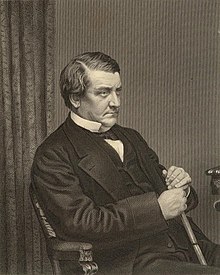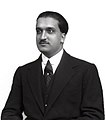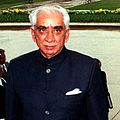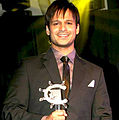Mayo College
| Mayo College | |
|---|---|
 | |
| Location | |
| Information | |
| School type | Public boarding school |
| Motto | Let there be Light |
| Founded | 1875 |
| Founder | Richard Bourke, 6th Earl of Mayo |
| Sister school | Mayo College Girls' School |
| School district | Ajmer district |
| Board of Governors | HH Maharaja Gaj Singh of Jodhpur |
| Headmaster | Maj. Gen. (Retd.) KVS Lalotra, AVSM, YSM, SM |
| Founder Headmaster | Col. Sir Oliver St. John |
| Faculty | 85 |
| Gender | Boys |
| Age | 9 to 18 |
| Number of pupils | 850, Student-Teacher Ratio 1:10 |
| Campus | 350 acres |
| Houses | 12 |
| Colour(s) | |
| Publication | Mayoor |
| Affiliation | CBSE |
| Former pupils | Mayoites |
| Annual fees | ₹310,000 (Home Students) ₹620,000 (International Students) |
| Website | www.mayocollege.com |
Mayo College (Informally Mayo) is a boys-only independent boarding school in Ajmer, Rajasthan, India. It was founded in 1875 by Richard Bourke, 6th Earl of Mayo who was also the Viceroy of India from 1869 to 1872. The school is one of the oldest public boarding schools of India. The school believes in all round development of its students through major emphasis on Sports and Co-Curriculars. The students of Mayo College are often cited to be of great character and determination. The present Principal is Maj Gen KVS Lalotra, who has occupied the post since 2010 and is the sixteenth Principal of the school.
The idea for the college was proposed in 1869 by Colonel Walter. The school was founded in 1875 and Colonel Sir Oliver St John became its first principal.[1] The founder's intention was to create an Eton of India. The 1st Earl of Lytton, Viceroy of India, said in a speech on campus in 1879:
- "The idea was well expressed long ago by Colonel Walter in an excellent and most suggestive report which may have influenced Lord Mayo when he founded the present college. In that very sensible report Colonel Walter pointed out that what was then most needed for the education of India's young rulers and nobles was an Indian Eton. Ajmer is India's Eton and you are India's Eton boys."[2]
With a view to providing the leaders of the princely states with an education similar to that given by a "public school" in the United Kingdom, the British built Mayo for the sons of the Indian upper classes, particularly the princes and nobles of Rajputana. The school houses 850 pupils aged 9 to 18. Admission to the school is based on a competitive entrance examination followed by an interview.
Mayo College is considered amongst the best boarding schools in the country.[3][4]
Old boys of the school are known as Mayoites.
History

The school was founded by Richard Southwell Bourke, Earl of Mayo, and Viceroy of India from 1869 to 1872 known popularly in India as Lord Mayo. Bourke was born on 21 February 1822 and died on 8 February 1872.

Mangal Singh from Alwar was the first student to be admitted to the institution in October 1875. The second was Mahatab Singh of Nindar.
A number of principals have guided the schools since its founding. The most noteworthy is JTM (Jack) Gibson, principal from 1954–1969, who gave Mayo College its post-independence identity by hiring young faculty, upgrading the curriculum, and persuading families other than the nobility of Rajasthan to send their sons to the school.[5][6]
Near the time of the institution's inception by the British, the college's students normally proceeded to Oxford or Cambridge universities after being groomed on how to behave like 'British gentlemen'.[7]
College building
The Main Building of Mayo College was designed by Major Mant in the Indo-Saracenic style popularised by Sir Samuel Swinton Jacob, the state engineer of Jaipur. For the construction of the Mayo College Main Building, several designs were submitted in the Indo-Saracenic, Grecian and Kolhapur styles by architects, and Mant's Indo-Saracenic design was adopted by the Viceroy in June 1875.
The construction of the white marble building of the college began in 1877 and was completed in 1885. Mant's design became well known as a classic symbol of Indo-Saracenic architecture and is quoted in architectural courses today.
Coat of arms

The coat of arms was composed from the design furnished by Lockwood Kipling, a former principal of the School of Arts, Lahore and father of the famous Rudyard Kipling.
In the upper centre of the shield are Mayo Arms, and Quarterings, a Lion Rampant and an Open Hand. On the right and left are the Sun and the Moon, typical of Suryawanshi and Chandrawanshi, the two great families of Rajputs. Below are the Panch Rang, the five sacred colours of the Rajputs, Red, Gold, Blue, White and Green. In the centre is a Rajput fort – two towers connected by a curtain. The Supports are on the right, a Bhil warrior with string bow and quiver full of arrows. On the left a Rajput, armed at all points, wearing a steel helmet with three plumes, a shield on his back, a dagger and Qatar in his belt, and a suit of chain covered with embroidered cloth and gauntlet on his hand.
The motto is "Let there be Light". The badge is a peacock, the sacred bird of Rajputana, standing on a two-edged, two-handed Rajput sword Khanda.
Postage stamp

On 12 April 1986, the post and telegraph department of the government of India released a stamp of Mayo College with the Main School building on its face recognising the school's role in the field of education. The multicolour stamp showing the main building of Mayo College, Ajmer, has been designed by India Security Press, Nashik Road. The First Day Cover shows the emblem of the Mayo College. The cancellation has been designed by Nenu Bagga. [8]
School museum
Mayo College is home to the Danmal Mathur Museum housed in Jhalawar House, which it shares with the Arts School. The college museum showcases priceless antiques and an armoury section. The museum is considered to have one of the best collections of any school museum in the world.[9]
History and traditions
- Mayo's first student, H.H. Maharaja Mangal Singh of Alwar, arrived at the school gates in October 1875 on the back of an elephant accompanied by 300 retainers and a menagerie of tigers, camels and horses.
- One of the school's traditions is meeting for tea in the lawns known as Mughal Gardens immediately after the Annual Prizegiving ceremony; it is believed that M.N. Kapur (who went on to become one of Modern School New Delhi's most respected and beloved principals) did away with using a rope to divide English guests and Indian guests at this ceremony.
- The Annual Prize giving, one of the oldest ceremonies at Mayo, has seen chief guests including Lord Irwin, Viceroy of India, Lord Chelmford, governor general of India, Dr. Rajendra Prasad, ex-president of India, HH Maharaja Sawai Man Singh II of Jaipur, HH Maharani Gayatri Devi of Jaipur, Vijayalakshmi Pandit, Dr Zakir Hussain, ex-president of India, Dr Karan Singh, Indira Gandhi, ex-prime minister of India, field marshal Sam Manekshaw, H.H. Sayyid Faher Bin Taimur of Oman, HM Birendra Shah, King of Nepal, Sardar Khushwant Singh, HH Madhavrao Scindia, Sir Peter Ustinov, Jaswant Singh and LK Advani.
- Other traditions at Mayo include an annual horseback parade by the students and sporting fixtures between Old Boys and current students (including a polo match).
Facilities
Houses
- There are 12 house out of which 8 are Senior Houses, a holding house(Class 7) and 3 Junior Houses.
- Each Senior and Junior house can accommodate 60-75 students.
- Oman house being the holding house has a capacity of 120-130 students.
Sports
- Mayo College has one of the best sporting facilities among the top boarding schools of India. There are facilities for students and staff consisting of playing fields for football, hockey and a cricket ground with a view of the Aravali Hills and a beautiful old red sandstone pavilion.
- Horse riding was discontinued after Independence and revived again in 1994 with 10 horses. Today Mayo College has 50 good horses and close to 250 boys and girls are trained. Mayo College also has 10 Polo Players and they practice regularly in the Polo ground. Students are also trained in Equestrian with a defined set of routines. Mayo College has participated in National Level Polo Competitions and produced good players like Himmat Singh Bedla, Nagender Singh, Pratap Singh, Sarveshwar Singh, Dhruv Singh and Shivdutt Singh. Mayo College participated in SUPA International Polo Tournament held in UK in 2008. Mayo College also actively participates in the Jodhpur Polo season and Delhi Horse Show winning a number of medals.
- The squash players may choose between the modern glass-backed courts or the historic Fanshawe courts, open to the sky. Mayo College has a nine hole golf course which was built recently. It also has many basketball courts.
- There is a standard 400m track. Athletics is one of the major seasonal and coaching sports. Every year the entire school is trained in Athletics as a seasonal game and then an Inter House competition is organized.
- Tennis is one of the most popular sports in Mayo College. The Junior School boys as well as Senior School boys regularly play tennis in the evening as a daily routine throughout the year. There are around 17 Tennis courts in Mayo College Campus. There are 5 All-weather Synthetic courts and around 4-5 clay courts in the senior school. The Junior school has 4 clay courts.
- The School Gym has always been a favorite place for all the young boys who are conscious about their health and posture. The school has a permanent Gym trainer. The Mayo Gym is a busy place and it draws approximately 40 boys everyday in the afternoon who come for body sculpting and fitness from a cross section of classes. The Gym is equipped with modern stations, free weights, treadmills and stands to make it an impressive facility on the campus.
Dining
- The college has 3 independent messes, Senior, Middle and Junior mess. There are approx. 70-80 mess workers.
- The Institution has its own Bakery.
Oman Guest House
- Visitors to Mayo College can stay in the heart of the campus in the Oman Guest House located close to the Principal's residence. The Guest House is primarily meant for stay of official School guests and visitors. However, rooms may be allotted to Parents, Staff and Old Boys at the discretion of the School, subject to availability. Rooms may also be used by their immediate family members only.
Publications
Publications are supplied internally and sent to other public schools in India and abroad. Publications of Mayo College are:
Mayoor
Mayoor was established in the late 1960s by the then principal of Mayo, Jack Gibson. It is a major bi-monthly newsletter of Mayo College featuring college news, updates, and photos. The editorial team consists of an editor-in-chief who is an English teacher of the school and a team of editors from the student community. Mayoor used to have a Hindi section which featured articles and poems. This was later removed when an independent Hindi newsletter called Paridrishya was established in 2006.
The Mayo Mail
The Mayo Mail is a weekly newsletter, established in 2008 by a group of students of Grade 7. It has now become a publication which prints four fresh sheets every week and is called the 'newspaper' of Mayo College. It consists of write-ups on school happenings and activities like the trademark Mayo 'Tweets' and Mayo 'Howlers'. It can be viewed online at www.themayomail.co.cc.
Paridrishya
The independent Hindi magazine called Paridrishya was established in 2006. The magazine consists of articles, poems and jotting written by the school community. The magazine has an editor-in-chief, who is a Hindi teacher of the school, and a group of student editors.
Reflection
Reflection, established in 2007, is the student magazine. It is filled with poems, articles and facts which are illustrated with pictures. Reflection comes out three times a year.
College Magazine
The College Magazine is an annual collection of happenings that year in Mayo College. It has English and Hindi sections and contains reports, speeches, photographs, poems, articles, and case studies of the school.
Other publications
- Cyber Quest is the IT magazine of Mayo College which contains technology related articles and answers.
- Euphoria is an annual publication which reports on activities happening in the prize giving function of the school.
- Zephyr – An Anthology of Poems is an annual publication which comes out in the prize giving and contains the best poems written by the students.
Notable alumni
Alumni of Mayo College are known as 'Old Boys' and are sometimes referred to as Old-Mayoites.
-
Sawai Man Singh II Maharaja of Jaipur
-
Sir Hari Singh Bahadur
-
Jaswant Singh (politician)
-
K. Natwar Singh (politician)
-
Indra Sinha(writer)
-
Tinu Anand (film director)
-
Amit Goyal (scientist and inventor)
-
Vivek Oberoi (Bollywood actor)
-
Bobby Deol (Bollywood actor)
Students come to Mayo from overseas, including members of royal families from Oman and Nepal. The school has educated two Sultans of Oman, one of which is the current Sultan's father – Sayyid Said bin Taimur and the late Princess Shruti of Nepal.
Mayo College has educated members of royal families including Bikaner, Alwar, Jammu and Kashmir, Kishangarh, Jaipur, Udaipur, Jodhpur, and Kotah. HH Sawai Man Singh II of Jaipur, Hari Singh of Jammu and Kashmir, Rana Arvind Singh Mewar, Prince Shivraj Singh of Jodhpur (Marwar-Jodhpur) and Kirit Bikram Deb Burman: Erstwhile Maharaja of Tripura from the second oldest continuing ruling lineage after the Mikados of Japan.
Old Boys from Mayo have served in the armed forces and others serve as members of Parliament and senior Civil Servants. Jaswant Singh is one of the few Indian politicians to have been the Minister for Defence, Finance and External Affairs and K. Natwar Singh of the Indian Foreign Service served as India's Ambassador to Pakistan and as External Affairs Minister.
Old Boys have served as Indian ambassadors to Morocco, Spain, Norway, Brazil, Libya, Switzerland and France.
Old Boys have made their mark in commerce and industry and in science and technology. The Vice Chairman of Tata Motors, Ravi Kant, erstwhile Chairman of Shell Oil-India, Ajay Mehta, erstwhile chairman Emeritus of Nestle-India, Narendra Singh of Sarila, former Chairman of Air India & Indian Airlines, Probir Sen, erstwhile chairman and MD of Axis Bank, P.J. Nayak, Member of the Bank of England Monetary Policy Committee, Sushil Wadhwani, the retired Chief general manager & Executive Director of the Reserve Bank of India & erstwhile managing director of NABARD, Yashwant Thorat, as well as Rakesh Mohan, who served as Deputy Governor of the Reserve Bank of India have all schooled at Mayo. Mayo has also produced academic economists like Alok Bhargava who researches on food policy issues in developing countries and in developed countries for formulating public policies. Mayo has produced scientists such as the scientist in the field of electronic materials, Amit Goyal.
Journalists who attended Mayo include Vir Sanghvi, Siddharth Varadarajan, and Manvendra Singh, writers Vikram Chandra (Red Earth & Pouring Rain, Sacred Games) and Indra Sinha (Animal's People, shortlisted for the Man Booker Prize), Sudip Chokroborty (Tin Fish & The Red Sun. Artist Painter Jaideep Mehrotra, (Red Fashion Designer Raghuvendra Rathore, Celebrity Chef Jiggs Kalra, Actors Ajay Mehta, Bobby Deol, Tinnu Anand, Vivek Oberoi, Sagarika Ghatge, Filmmakers Pradip Krishen (also an environmentalist and writer of Trees of Delhi), Samir Karnik, Goldie Behl, Heeraz Marfatia, etc. and theatre personality, Amir Raza Husain.
The school has produced sportsmen including Charu Sharma, Cricketer Arun Lal and Lokendra S. Ghanerao (who captained India at Polo).
J. T. M. Gibson Award for Excellence
The J. T. M. Gibson Award for Excellence was created in 2007 to be given to old boys who have, consistent with Jack Gibson's ideals, made a difference to society. Honorees are:
- 2007
- Mr. Jaswant Singh Jasol, Member of Parliament (1954 Batch)
- Mr.Ravi Kant, managing director Tata Motors (1961 Batch)
- Mr. Rakesh Mohan, Deputy Governor Reserve Bank of India, (1963 Batch), Lt. Gen (Retd.)
- Lt. Gen. Aditya Singh, PVSM, AVSM, Retd. C-in-C Southern Command (1963 Batch)
- 2008
- Mr. Vikram Mehta, Chairman Shell India (1968 Batch)
- Mr. Probir Sen, Retd. managing director Air India & Indian Airlines (1961 Batch)
- 2009
- Mr. Jyoti Krishan Dutt, Retd. Director General of the National Security Guard (NSG) (1965 Batch)
- Justice Kamaljit Singh Garewal, Judge UN Appeals Tribunal (1963 Batch)
- Prof. Siraj Hassan, Director, Indian Institute of Astrophysics, Bangalore (1966 Batch)
- 2010
- Mr. Indra Sinha, novelist (1965 Batch)
- Dr. Arun Majumdar, Director ARPA-E (1977 Batch)
- 2011
- Mr. K. C. Verma, Retd. Director General of R & AW (1965 Batch)
- Dr. Rajan Suri, Emeritus Professor of Industrial Engineering (1968 Batch)
- 2012
- Mr. Siddharth Varadarajan, Editor, The Hindu Newspaper
- Mr. Aamir Raza Husain, theatre personality
See also
- Mayo College Girls School
- Daly College
- Scindia School
- Rajputana
- Maratha Confederacy
- British Raj
- Princely State
Notes
- ^ List of Principals of Mayo College Accessed 11 November 2007
- ^ Mayo College as India's Eton A speech by the Earl of Lytton in 1879
- ^ 'Bearers of the standards, Outlook C Fore Survey' Outlook Magazine, 2001. Accessed 11 November 2007
- ^ Eton of The East; December 23, 2000; Indian Express Newspaper
- ^ List of principals on the Mayo College website
- ^ 'The Gibson Years'. The Mayo College Alumni website.
- ^ [1]
- ^ Detailed Stamp Release Information Postal Stamp Name: MAIN BLDG MAYO COLLEGE; Stamp Issue Date: 12/04/1986; Postage Stamp Denomination: 1.00; Postal Stamp Serial Number: 1189; Number of stamps printed: 15,00,000; Philatelic Stamp Description: The 100 P. multicolour stamp showing the main building of Mayo College, Ajmer, has been designed by India Security Press, Nashik Road. The First Day Cover shows the emblem of the Mayo College. The cancellation has been designed by Nenu Bagga.
- ^ Opportunities: The Mayo College, Ajmer; Jun 09, 2004; The Hindu Newspaper
References
- M.N. Kapur Biography
- Opportunities: "The Mayo College, Ajmer" from The Hindu, National Newspaper dated Jun 09, 2004
- Ajmer, The Official Website
- Biography of Vir Sanghvi from Hindustan Times Luxury Conference
- Biographical Sketch of Jaswant Singh, Parliament of India
- Biography of Vikram Chandra, award winning author
- Natwar Singh A brief biography
- Old Boys Society Report, 2004
- Article in Computers Today
- Government of India, Press Information Bureau
- Write up on The Late Princess Shruti of Nepal
- Article on Aamir Raza Hussain in The Times of India
- Less royalty, Same loyalty. Article on Mayo College in the Times of India
- Bio of Major Maroof Raza
- Less royalty, same loyalty; 4 Jul 2004; Times of India Newspaper
- Eton of The East-Article in Indian Express
- Eton, the Raj and modern India; By Alastair Lawson; 9 March 2005; BBC News. Note: This BBC News page on Eton College, UK has links (in right margin) to Mayo College and The Doon School in India.
External links
- Official website
- Mayo College Old Boys/alumni associations
- Unofficial site
- Pictures of Mayo College on Flickr
- Remembering Jack Gibson (March 3, 1908 – October 23, 1994), An Indian Englishman. Doscos and Mayoites of the time remember Mr. J.T.M Gibson who taught and was a House Master at the Doon School and then became Mayo College Principal from 1954 – 1969
- IPSC school profile







